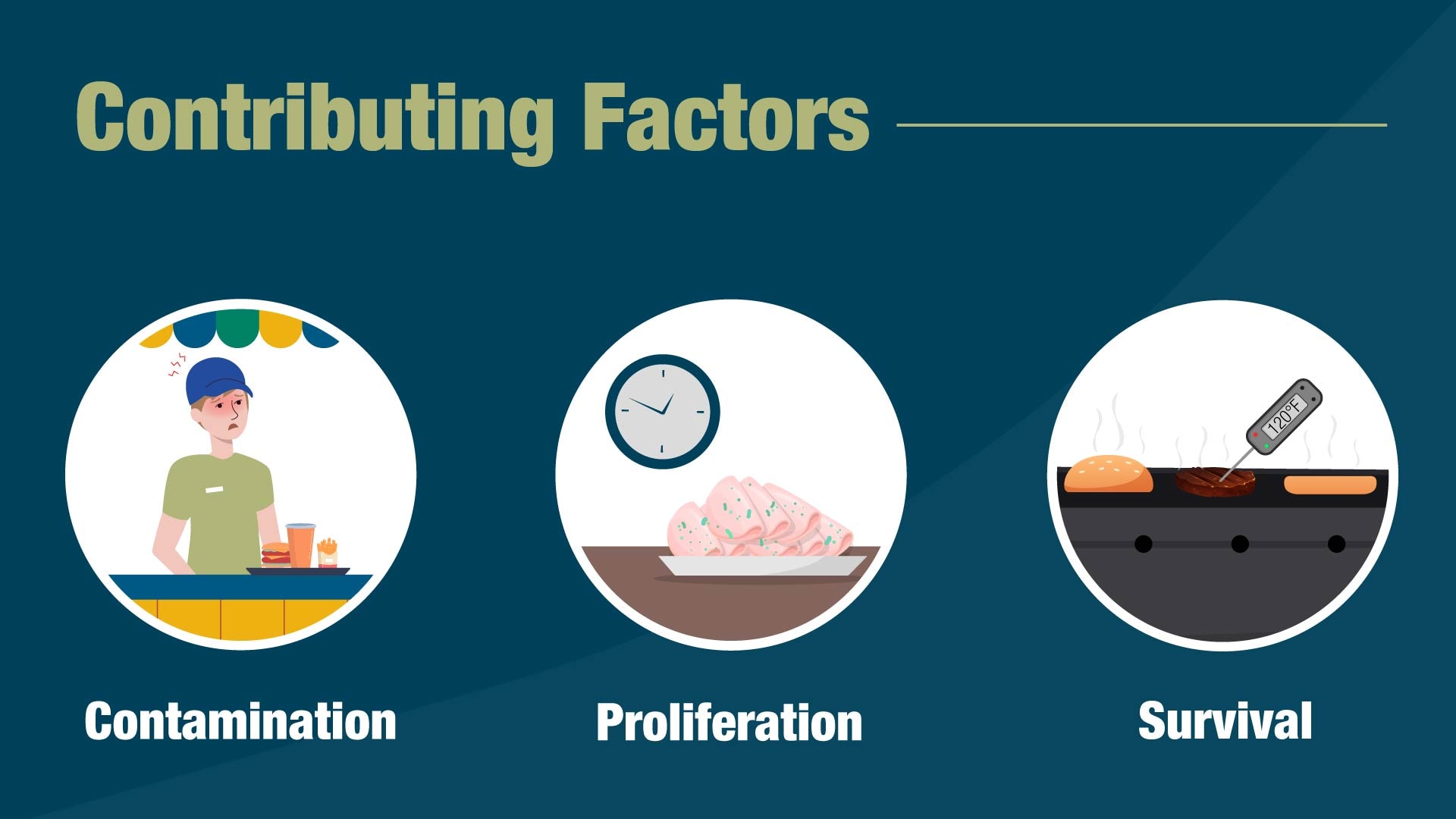At a glance
Learn about contributing factors to outbreaks and how you can identify them during outbreak investigations.

Preventable causes of outbreaks
Contributing factors are the practices and factors that lead to outbreaks. In an outbreak, contributing factors are the "how" and root causes are the "why." Environmental health investigators can use this information to recommend ways to address these issues and prevent them in the future.

Learn how to identify contributing factors
Three types

- Pathogens and other hazards get into food
- For example, a sick food worker handles food with their bare hands
- Pathogens already in food grow
- For example, food held at the wrong temperature for a long time can allow harmful bacteria to grow
- Pathogens survive a process to kill or reduce them
- For example, food is not cooked long enough or to a hot enough temperature
Restaurant outbreaks
The most common contributing factors for outbreaks in restaurants are related to sick food workers and food preparation practices.
Sick food workers can contaminate ready-to-eat food when they come into work while experiencing symptoms, such as vomiting or diarrhea. Food workers who are infectious can contaminate food:
- With bare hands
- While wearing gloves
- In other ways, such as letting food touch a contaminated cutting board or utensil

Improper food preparation practices are another common contributing factor for restaurant outbreaks. Not cooking food to a hot enough temperature and other improper food preparation practices can lead to pathogens growing.
How environmental assessments help
The environmental assessment component of outbreak investigations help identify contributing factors and root causes. Environmental assessment activities include:
- Interviewing kitchen managers and food workers
- Observing how food is prepared
- Reviewing or collecting records (for example, records of food cooking temperatures, traceback records)
- Sampling for pathogens in the restaurant kitchen
What programs can do
Environmental health and food safety programs can:
- Take CDC's free, interactive training on conducting environmental assessments to improve their ability to identify contributing factors and their underlying root causes.
- Conduct an environmental assessment as soon as they learn of a potential outbreak.
- Use epidemiologic and laboratory data to guide the environmental assessment.
- Report contributing factors to CDC's National Environmental Assessment Reporting System (NEARS).
State and local food regulatory programs can:
- Join NEARS to gain critical information for their program and to inform national food safety efforts.
- Use the FDA Food Code as the model for regulation of restaurants and retail food establishments.
Explore what we learned
More information
Explore the following resources:
- From inspector to investigator: finding the factors that lead to foodborne outbreaks (quick training video)
- Contributing factor definitions (list of all 30 contributing factors)
- Root causes of outbreaks (resources on identifying root causes)
- Environmental Assessment Training Series (EATS) (training)
Additional articles on contributing factors:
- Factors that contribute to outbreaks of foodborne illness (summary of scientific article)
- Modernizing the foodborne outbreak contributing factors: the key to prevention (column about the 2020 revision process)
- Outbreak characteristics associated with identification of contributing factors to foodborne illness outbreaks (scientific article)
